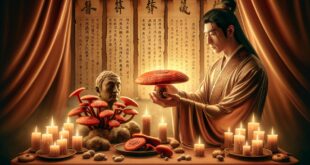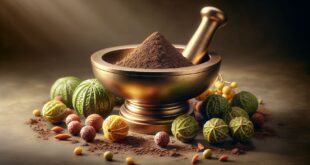Long before commercially packaged sage bundles started showing up in boutiques and Instagram stories, people across the globe reached for herbs around their homes and homelands—not because it was a trend, but because it was how life was lived. Smoke wasn’t just burned for aesthetic or scent—it was medicine, message, and movement. It was how energy was shifted and space was reset. And while white sage gets most of the attention, it’s far from the only plant that holds heat and spirit.
Let’s talk about the lesser-known but long-respected botanical allies—those humble leaves, roots, and resins that folks used (and still use) for herbal smudging, purification, ceremony, and ordinary life maintenance.
Western wildcraft: more than just sagebrush
In the American West, besides white sage (Salvia apiana), people historically used juniper, desert mugwort, and even piñon resin. Juniper, with its crisp, almost biting aroma, wasn’t just about clearing “bad vibes”—it was used to treat colds, help with childbirth recovery, and added to sweat lodge ceremonies for both its antimicrobial and spiritually cleansing properties.
Then there’s desert mugwort (Artemisia tridentata or ludoviciana), sometimes called “prairie sage” or “gray sage.” Not actually sage at all, it’s got a camphorous, almost dream-like scent, and was used by plains and mountain tribes for spiritual cleansing and vivid dreamwork.
Piñon resin—thick, sticky, and pungent when burned—brings an earthy anchoring smell and was often used in mountain zones as natural incense for household protection. Folks didn’t always have access to fancy bundles or wands. Sometimes they’d just toss dried leaves or bark on the stones after a fire.
“You never really conquer a mountain; you only stand on the summit a few moments before the wind blows your footprints away.” — Arlene Blum
Why quote a mountaineer in a piece about herbs? Because the herbs, like the mountains, aren’t there for ownership. They’re there for relationship.
European folk roots: from the hearth to the field
Step into old Celtic or Slavic traditions, and smoke cleansing takes on yet another dimension. Before anyone spoke of “smudging,” villagers in the Scottish Highlands burned juniper branches inside their stone homes during a practice known as “saining”—a blessing and purification ritual done before major life transitions, like childbirth or the new year. The smoke scrubbed the air, spiritually and literally, in cold stone homes where medicine was also myth.
In Alpine Europe, people used herbs like rosemary, thyme, and lavender. During the Rauhnächte – the “rough nights” between Christmas and the Epiphany – families swept hearths and burned bundles of wild-harvested plants to ward off misfortune and invite health. Lavender wasn’t just for sachets. Its smoke was thought to chase melancholy away and soothe tense households.
Also not to be missed: vervain, yarrow, wormwood, and garden sage. All of them pulled double duty—used internally as teas or tonics and externally through burning for warding, calling, and remembering. It wasn’t seen as magical; it was just part of living close to the soil and sky.
African and Middle Eastern echoes
The myrrh and frankincense burned across North Africa and the Levant aren’t just for cathedrals and Orthodox rituals. These resins date back over 5,000 years in human record. Beyond the spiritual context, both are anti-inflammatory and antimicrobial. Burning them helped purify the air in communal gatherings and desert dwellings alike.
In Ethiopia and Eritrea, frankincense is a household staple—used not only in church but during coffee ceremonies and important life events. In ancient Egypt, kyphi—a complex blend of herbs, wood, and honey—was used as a calming incense before sleep, reportedly even in temples to evoke dreams and invite healing.
The logic was simple: if you’ve been carrying pain (spiritual or physical), use plants to move it. Breathe better. Grieve well. Reset.
“The soul becomes dyed with the color of its thoughts.” — Marcus Aurelius
The plants, when burned with care and intention, help recolor the air around us. Smoke becomes not just scent, but memory.
Asia’s quiet presence: sacred simplicity
Let’s not forget the long-standing traditions from East and South Asia, where purification through herbal fragrances has deep philosophical roots. In Japan, sandalwood and aloeswood (oud) have been used in Kōdō—the “Way of Fragrance.” This isn’t just a casual thing. It’s as structured and disciplined as a tea ceremony or martial art. The smoke isn’t for dominance—it teaches presence.
In India, burning dried tulsi (holy basil), neem, or guggul resin is still common in homes—and not just for ritual. Tulsi cleanses the air, supports respiratory health, and is considered a living embodiment of spiritual energy. Guggul, from the Commiphora tree, has been used in Ayurvedic medicine as a purifying agent for both body and living space.
You also find vetiver roots and dried petals mixed into charcoal disc blends sold in small villages and temple stores—real, natural incense rooted in need and reverence, not branding.
Plants carry memory—so use ‘em with respect
If there’s a thread running through these traditions, it’s respect. Not trend-chasing, not sampling—relationship. Across regions and histories, people knew which plants grew in their area, when to pick them, how to dry them, and what offerings to make. Many still do.
So when you’re reaching for herbal smudging materials like cedar leaves, cinnamon bark, dried rose, or bay laurel—pause. Ask yourself where it came from. Whose hands touched it. What energy the plant carried before it met fire. You don’t need to be a ceremonialist or carry a lineage to use plants well—but you need reverence.
Whether you’re cleaning a room, prepping for ritual, or easing into bedtime, using regional, sustainable herbs for smoke cleansing connects you to something deeper—soil, season, and spirit—not just scent. Use what you have, grow what you can, and understand what you burn. Let the plants speak. Not louder—just honestly.
Cultural origins and regional practices
Many people think smoke cleansing belongs solely to a specific culture or time in history. It doesn’t. Herbal smudging — if we drop the buzzword and lean into the practice — has been part of just about every land where people worked with what they had and listened to the environment. What changes is who held the knowledge, how it got passed down, and what plants were friends to the soil.
Let me explain.
Smoke as medicine, smoke as story
In Indigenous American nations, smoke cleansing wasn’t performative. It was living knowledge — ancestral, practical, and intimate. The Lakota, for example, use the sacred pipe not as a casual “smudging” tool, but as a prayer in motion. Each element — the pipe, tobacco, fire, breath — held sacred roles. That’s why tossing white sage into a shell and waving it around has understandably rubbed many Indigenous folks the wrong way. Without context, sacred becomes sterile.
But this doesn’t mean using smoke is off-limits. It means asking: where’s your lineage? What’s your land say? Every region has its own purification plants and rituals.
In Central America, the Maya burned copal resin — often during ceremonies for birth, planting, or honoring ancestors. Copal gives off a bright, citrusy yet holy scent, and its tree, the Bursera, becomes a living altar when harvested with respect. Elders would collect the resin early in the morning. Not just because it melts easily in heat — but because sunrise has meaning. Light meeting scent meeting story.
In the Andes, herbs like muña and palo santo played similar roles. That said, popularization of palo santo has been a double-edged sword. Once treated as a beloved local ally — harvested from naturally fallen trees — crowded markets now sell it like candy, rarely considering its cultural context. There’s a reason some communities ask outsiders to pause before burning it.
If your purification tools come in plastic wrap from an overseas wellness shop, consider that a misstep, no matter how sacred you feel while using it.
Europeans did it too — just differently
Smoke cleansing traditions didn’t originate in North America. They’re global. In eastern Europe, for example, smoke played a role in agricultural rites and daily rituals. Latvian and Lithuanian folk used wormwood and birch bark during summer solstice festivals — burned near doorways to protect against wandering spirits or bad harvest luck.
Some Slavic households would burn herbs over the cradle of a newborn, or before a wedding, believing the plants carried blessings from the land. It wasn’t about purity in a rigid sense — but about energetic texture: what are you bringing in, and what should stay out?
The Romani people are especially overlooked when talking about herbal smudging. Despite being pushed from land to land, they carried a nomadic herbal wisdom — knowing exactly which dried leaves soothed nerves or uplifted heavy energy in a space. Bay, juniper, mugwort… they weren’t trendy; they were tools.
Even Catholic Europe has its roots in herbal smoke. Incense used in churches? Originally frankincense, myrrh, and storax resin — chosen not just for the scent, but for their medicinal and symbolic properties. Healing, devotion, grounding. You’d smell smoke in pews the way you’d smell rosemary in an Italian kitchen — familiar and comforting, not exotic.
What about the Pacific?
Let’s swing over to the Pacific Islands. In places like Hawai‘i, `alaea salt and koa wood chips were traditionally used in combination with chants and ocean water to cleanse spaces and people. Burning wasn’t always necessary — purification could come from smoke, sure, but also from steam or salt and breath. The protocol matters just as much as the plant.
In Māori culture of Aotearoa (New Zealand), ceremonial cleansing — “whakanoa” — often uses water or natural elements, not necessarily smoke, to remove sacredness and return someone to everyday space. But mānuka and kawakawa can be dried and burned too — less as a trend, more as a living system of relationship with plants.
So if you’re living in the Pacific and want to practice smoke cleansing, it makes more sense to ask elders, community herbalists, or your own ancestry what plants your soil supports, instead of importing traditions like a keepsake.
We live in a time where people long for ritual but are disconnected from the land under their feet. The tension isn’t the longing — it’s the forgetting.
“To forget how to dig the earth and to tend the soil is to forget ourselves.” — Mahatma Gandhi
Smoke practices without context risk becoming mimicry. But, with attention and humility, they can become one of the most grounding ways to return to self.
Where your roots run matters
Here’s a good gut-check: if you’re using white sage in Sweden, or palo santo in Nova Scotia, ask yourself — what grows where you live? What did your people burn, brew, or bury to move stagnant energy or honor transitions?
Local plants often have the same properties you’re seeking in imports — antimicrobial strength, strong scent, emotional calm. Wild thyme. Bay leaf. Pine needles. Even citrus peels twisted and dried. That’s natural incense without the extraction.
Remember, purification isn’t about erasing; it’s about clearing and reconnecting. You’re not making a space “pure” — you’re preparing it to hold truth.
And that’s where lineage, land, and lived memory intersect. Choose herbs with care. Burn with respect. Let the smoke carry something more than just aroma — let it carry story.
Modern applications and sustainable alternatives
Smoke cleansing today walks a strange line: part healing tool, part commodity. For many, herbal smudging has become another item on the checklist of “wellness must-haves”—right up there with crystals and cacao. But here’s the thing: it doesn’t have to be performative or imported to be powerful. In fact, the most meaningful practice often starts by looking at your own backyard, windowsill planters, or the edges of the woods outside town.
Instead of reaching for dried white sage from a California landscape you’ve never walked, imagine burning the curled leaves of your own bay laurel tree or tossing sprigs of thyme and rosemary from your kitchen bundles onto a small charcoal puck. Feels different, doesn’t it?
Think small, grow local
If your instinct is to look toward what’s rare or ancient-seeming, pause. Many common garden herbs offer both scent and spirit. Rosemary is deeply cleansing, with a gentler energy than sage—perfect when you’re seeking clarity instead of confrontation. Mint, especially spearmint, brings a light, uplifting tone to a space. It’s less commonly burned because it doesn’t always smolder well on its own, but mixed with cedar chips, it’ll buzz the air like a summer field.
Want a makeshift blend? Try combining dry rosemary, bay leaf, and orange peels. Light on a burner or cast iron pan, and you’ve got a humble but powerful natural incense—rooted in your pantry, not someone else’s ceremony.
And talking about sustainability doesn’t need to kill the vibe. It’s less about being puritanical and more about awareness. Is the plant endangered? Was it cultivated or wild-harvested with care? Is the packaging minimal or wasteful? These seem like small checkboxes—but when multiplied across thousands of purchases, they shift ecosystems. Check out the work being done by the United Plant Savers, who track the ecological status of traditionally used herbs and advocate for ethical stewardship of medicinal flora.
“Don’t be satisfied with stories, how things have gone with others. Unfold your own myth.” — Rumi
That unfolding doesn’t require importing sacred plants ripped from foreign traditions. It can begin in your own garden.
New rituals don’t require ancient permissions
There’s no elder board approving your smoke cleansing approach. But there is something deeper required: sincerity.
Say you live in the Northeast. Mugwort grows like stubborn poetry along roadsides there—grey-green, aromatic, and strong. Known historically for dreamwork and purification, it’s one of the easiest herbs to wild-harvest and dry at home. You don’t need permission to explore its use in herbal smudging. But you do need attention—ask the plant, the place, and yourself what it’s for. That’s where care becomes integrity.
Don’t have a backyard full of herbs or access to pristine fields? Start with indoor windowsill growers—basil, lemon balm, peppermint. These aren’t just kitchen flavors. Once dried, their leaves carry light energy, perfect for gentle daily space clearing. And yes, you can burn them. Use a proper fireproof surface, and know that some herbs burn fast—use a pinch, not a pile.
A few tools to consider for mindful burning:
- Charcoal discs: Easy to light and perfect for resin or loose herb burning
- Cast iron pans or ceramic dishes: Fire-safe and versatile vessels
- Handmade herb bundles: Tie small dried stems with cotton string—not too tight—and let them season for at least two weeks before burning
Mixing herbs together? Keep it to 2–4 types per blend. Too many scents, and it muddies the message. Think of it like making tea or soup—you want harmony, not overload.
New smoke, same purpose
The ancient purpose of smoke hasn’t changed—it’s still about clearing static, reconnecting spirit, and creating a moment of pause. But the form it takes now can (and probably should) be updated. Loose herbal blends in a small bowl feel more informal and less performative than giant sage sticks. A few crumbled leaves over heat can carry as much energy as branded ritual kits. Less show, more scent. Less staging, more sincerity.
If you live in the city and don’t want to fill your apartment with smoke, try herbal steam. Crushed rosemary, dried lavender, or eucalyptus added to boiling water—inhale gently with your head draped in a towel. It’s not exactly ceremonial, but that little pocket of clarity? That’s purification, too.
And let’s not pretend smoke is the only purifier. Sometimes salt is quieter but stronger. A bowl of coarse salt in the corner, or a sprinkle around thresholds, holds the same intention of clearing. It’s not about being precious with tools—it’s about being present with purpose.
Some herbs to grow and burn that won’t break your ethics (or the bank):
- Rosemary: Clarity, memory, clearing mental fog
- Pine needles: Grounding, antiseptic, masculine energy
- Lemon balm: Lifting emotions, encouraging lightness
- Thyme: Strength, respiratory support, subtle courage
These aren’t imported. They’re homegrown answers to the same age-old questions: How do I clean this space? How do I feel more real in it?
These alternative approaches carry the same weight—without the cultural minefield or ecological cost. Whether burned, steeped, or steamed, local herbs speak directly to your land, your breath, your need.
So next time the mood turns heavy or the air feels off, don’t reach straight for a retail sage wand. Try lighting a few pine needles and thyme from your fall foraging walk, or curl lemon balm leaves from your patio planter over hot coals.
Herbal smudging isn’t a style—it’s a function rooted in care, locality, and intention. You don’t need ancient scripts or imported smoke to participate. Just faithful hands, familiar plants, and a moment of pause.
That’s when the clearing really begins.
 DS Haven In Light Of Things
DS Haven In Light Of Things





